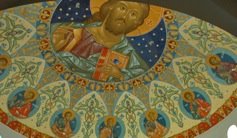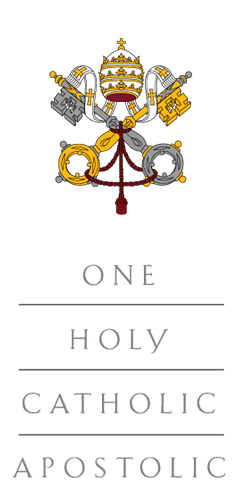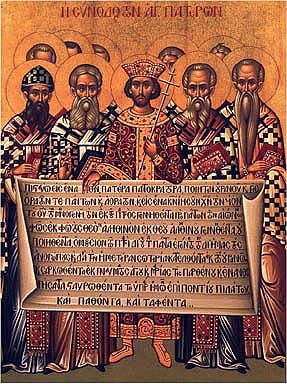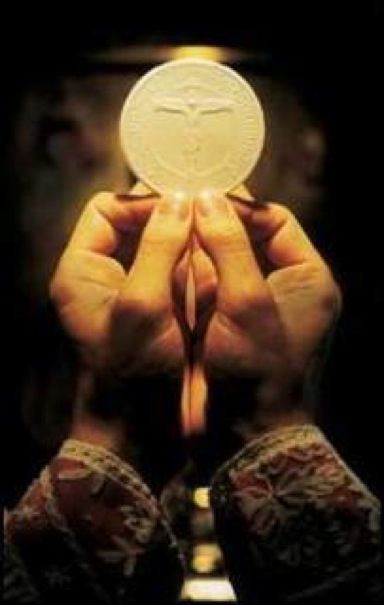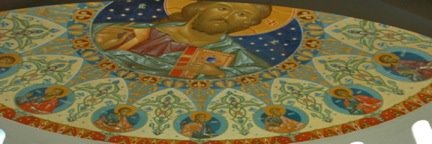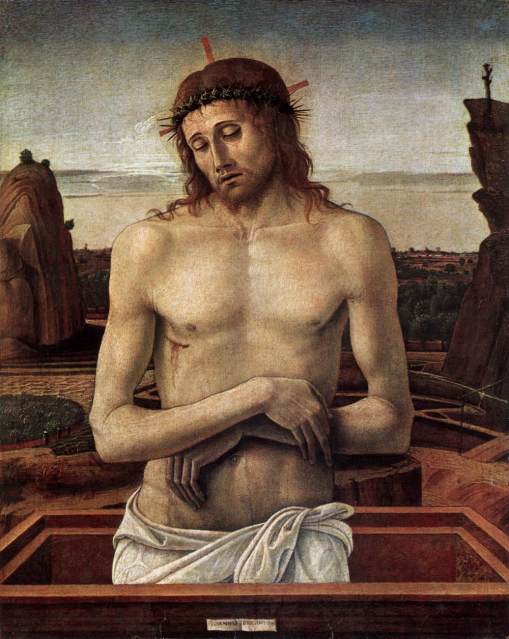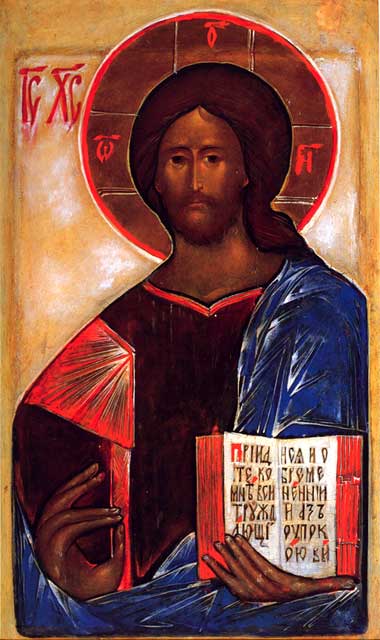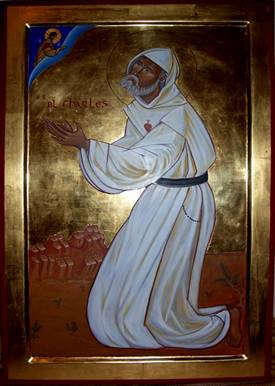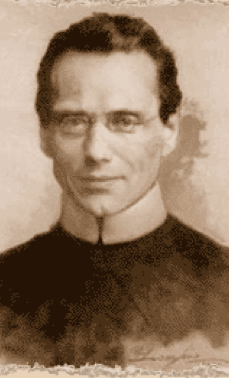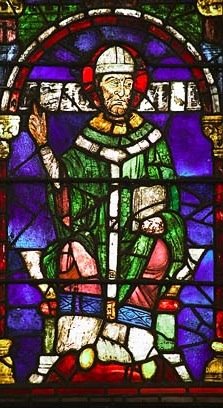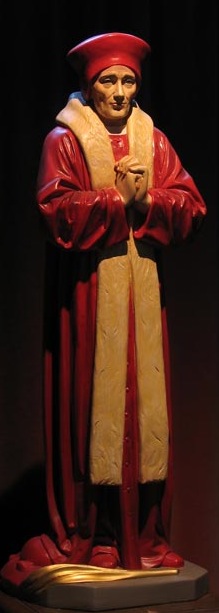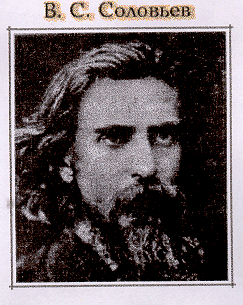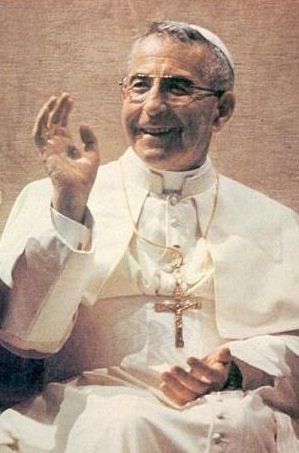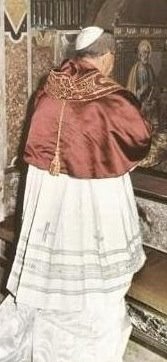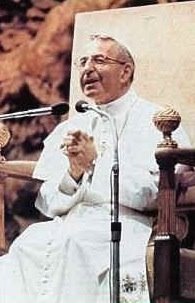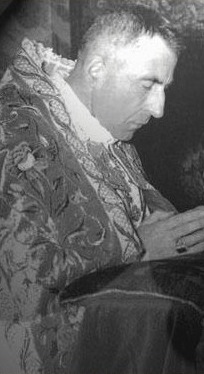The story of Our Lord's Ascension and His foretelling of the Pentecost to come is recounted most fully by Luke in in Acts 1:1-11:
The former treatise I made, O Theophilus, of all things which Jesus began to do and to teach, Until the day on which, giving commandments by the Holy Ghost to the apostles whom he had chosen, he was taken up. To whom also he shewed himself alive after his passion, by many proofs, for forty days appearing to them, and speaking of the kingdom of God. And eating together with them, he commanded them, that they should not depart from Jerusalem, but should wait for the promise of the Father, which you have heard (saith he) by my mouth. For John indeed baptized with water, but you shall be baptized with the Holy Ghost, not many days hence.
They therefore who were come together, asked him, saying: Lord, wilt thou at this time restore again the kingdom to Israel? But he said to them: It is not for you to know the times or moments, which the Father hath put in his own power: But you shall receive the power of the Holy Ghost coming upon you, and you shall be witnesses unto me in Jerusalem, and in all Judea, and Samaria, and even to the uttermost part of the earth. And when he had said these things, while they looked on, he was raised up: and a cloud received him out of their sight. And while they were beholding him going up to heaven, behold two men stood by them in white garments. Who also said: Ye men of Galilee, why stand you looking up to heaven? This Jesus who is taken up from you into heaven, shall so come, as you have seen him going into heaven. Then they returned to Jerusalem...
He ascended to be glorified with the Father, to sit at the Father's right hand, to rule as King of Kings, to send us the Holy Ghost, and, as Hebrews 1:1-2 says, to be our High Priest Who
is set on the right hand of the throne of majesty in the heavens, A minister of the holies, and of the true tabernacle, which the Lord hath pitched, and not man.
And He ascended to prepare a place for us. St. John recounts in the first 3 verses of the fourteenth chapter of his Gospel that after the Last Supper, Our Lord told His disciples:
Let not your heart be troubled. You believe in God, believe also in me. In my Father's house there are many mansions. If not, I would have told you: because I go to prepare a place for you. And if I shall go, and prepare a place for you, I will come again, and will take you to myself; that where I am, you also may be.
Glorious promise to those who believe and obey! And there is something else most splendid about the Ascension: Christ foretold it, and in such a way as to teach the Apostles of the miraculous nature of the Eucharist. In John 6:56-58, we read:
For My Flesh is meat indeed: and My Blood is drink indeed. He that eateth My Flesh, and drinketh My Blood, abideth in Me, and I in him. As the living Father hath sent Me, and I live by the Father; so he that eateth Me, the same also shall live by Me.
Immediately after hearing these words, some of His disciples are scandalized -- some even to the point of walking away from Him. Jesus then said to them that they would know His words are true when they will see an obvious miracle with their own eyes -- His Ascension. Verses 62-63:62
But Jesus, knowing in himself, that his disciples murmured at this, said to them: Doth this scandalize you? If then you shall see the Son of man ascend up where he was before?
As to the place of His Ascension, the Golden Legend, written in A.D. 1275 by Jacobus de Voragine, Archbishop of Genoa, has this to say:
As to the first he ascended from the mount of Olives by Bethany; the which mountain, by another relation, is said the mountain of three lights. For by night on the side of the west it is lighted of the fire that burneth in the Temple, which never is put out ne quenched. On the morning it is light of the orient, for she hath first the rays of the sun before it shineth in the city, and also it hath great abundance of oil that nourisheth the light, and therefore it is said the hill of three lights.
Unto this hill Jesu Christ commanded his disciples that they should go. For on the day of his Ascension he appeared two times, one time to eleven disciples that ate in the hall where they had supped with him. All the apostles and the disciples and also the women, abode in that part of Jerusalem which is called Mello, in the mountain of Sion, where David had made his palace. And there was the great hall arrayed and ordained for to sup, whereas Jesu Christ commanded that they should make ready for to eat the Paschal Lamb, and in this place the eleven apostles abode, and the other disciples, and the women abode in divers mansions there about.
And when they had eaten in this hall, our Lord appeared to them and reproved them of their incredulity. And when he had eaten with them, and had commanded them that they should go to the Mount of Olivet on the side by Bethany, he appeared again to them, and answered to them of the demands that they made to him indiscreetly, and with his hands lifted he blessed them; and anon before them he ascended unto heaven.
Of the place of this ascension saith Sulpicius, Bishop of Jerusalem, and it is in the Gloss. For there was edified a church in the place where were made the signs of his ascension. Never sith [afterwards] might be set there any pavement, it could not be laid ne set but anon it issued out, and the stones of the marble sprang into the visages of them that set it. And that is a sign that they be stones on which Christ passed upon, which lie in the powder and dust, and abide for a token and sign certain.
The footprints said to be His are now enclosed in a shrine called the Chapel of the Ascension near the top of the mountain (picture above). The original building was destroyed by the Persians in A.D. 614, but was rebuilt by Crusaders. The Moslems took control of the building in the 13th century and transformed it into a mosque, walling in the arches, and adding a dome.
Customs
As to customs, it is traditional to eat some sort of bird on this day, in honor of Christ Who "flew" to Heaven. If you live in a hilly or mountainous area, climbing the hills in commemoration of Jesus and the Apostles' climbing the Mt. of Olives, whence Jesus ascended to Heaven, is customary. Putting the two together, a picnic that includes some sort of bird and eaten on a hill or mountain would be a perfect way to spend the day.
In some parts of Italy (Tuscany, for ex.) there is the interesting custom of catching crickets on this day. Families will have a picnic while the children look for crickets, which are said to bring blessings (as they are seen to do in the East, too) -- especially if they still sing when taken home in little cricket cages. Back in the day, a man would adorn his beloved's doors with flowers on this Feast, and give her a cricket cage, too. I have no idea as to how crickets came to be associ
ated with the Ascension, but the Feast is also known in parts of Italy as "La Festa del Grillo" ("the Feast of the Cricket"). Now this custom usually takes place on the Sunday after Ascension Day, and caged crickets are sold so that children can release them -- but crickets can be kept as singing pets, too!
Something else wonderful happens in Italy on the Feast of the Ascension and the days following: in Venice, there is a clock tower in the Piazza San Marco. This marvelous clock, made in A.D. 1499 (and recently restored) indicates not
only the minutes and hours, but the days, months, Zodiacal signs, and phases of the Moon as well. At the top of the tower are two large figures known as the Moors ("Mori"), who signal the hour by striking a large bell. Underneath them is a large, golden lion -- the symbol of St. Mark, patron of Venice. Underneath this is a niche which holds a figure of Our Lady and her Son. Twice a year -- on the Feast of the Epiphany and during the festivities surrounding the Ascension (known as "la Festa della Sensa" in Venice) -- doors on either side of Our Lady open up, and out come the three Magi, led by an angel. The angel and Kings make their way around Our Lady and Jesus, the angel regaling them with his trumpet, and the Kings bowing and removing their crowns. 1
Also on this day, a very old civic ritual is re-enacted in this city. The Ascension had always been an important Feast to the Venetians: in A.D. 1000, the Doge left on this Feast Day to aid the Dalmatians who were being threatened by the Slavs. This led to Venetian security and became celebrated annually with a blessing of the sea. Then, in A.D. 1177, the Doge helped bring about a peace between Barbarossa and the Papal States. Pope Alexander III was so grateful for the Doge's service that he sent a blessed ring as a sign of the sovereignty that the Doge and his successors will have perpetually over the sea. The blessing of the sea turned into a "marriage with the sea," and since that time, the Doge of Venice would board an ornate, gilded boat (the Bucintoro, or Bucentaur) and be rowed to the lagoon in front of the church of San Nicolo del Lido, accompanied by clergy and government types, a
nd with a procession of other decorated boats following behind. There, the Doge would throw a ring into the waters while saying the words "Desponsamus te mare, in signum veri perpetuique dominii," which mean, "We marry you, oh sea, as a symbol of perpetual dominion." Now the mayor throws the ring, thereby uniting that beautiful city with the sea... (See paintings of the Clock Tower and the voyage of the Doge on the bucintoro, painted by Francesco Guardi.)
Reading
Sermons by Pope Leo the Great (ca. 395-461)
Sermon LXXIII
I.
The events recorded as happening after the Resurrection were intended to convince its truth. Since the blessed and glorious Resurrection of our Lord Jesus Christ, whereby the Divine power in three days raised the true Temple of God, which the wickedness of the Jews had overthrown, the sacred forty days, dearly-beloved are to-day ended, which by most holy appointment were devoted to our most profitable instruction, so that, during the period that the Lord thus protracted the lingering of His bodily presence, our faith in the Resurrection might be fortified by needful proofs.
For Christ's Death had much disturbed the disciples' hearts, and a kind of torpor of distrust had crept over their grief-laden minds at His torture on the cross, at His giving up the ghost, at His lifeless body's burial. For, when the holy women, as the Gospel-story has revealed, brought word of tile stone rolled away from the tomb, the sepulchre emptied of the body, and the angels bearing witness to the living Lord, their words seemed like ravings to the Apostles and other disciples. Which doubtfulness, the result of human weakness, the Spirit of Truth would most assuredly not have permitted to exist in His own preacher's breasts, had not their trembling anxiety and careful hesitation laid the foundations of our faith. It was our perplexities and our dangers that were provided for in the Apostles: it was ourselves who in these men were taught how to meet the cavillings of the ungodly and the arguments of earthly wisdom. We are instructed by their lookings, we are taught by their hearings, we are convinced by their handlings. Let us give thanks to the Divine management and the holy Fathers' necessary slowness of belief. Others doubted, that we might not doubt.
II.
And therefore they are in the highest degree instructive. Those days, therefore, dearly-beloved, which intervened between the Lord's Resurrection and Ascension did not pass by in uneventful leisure, but great mysteries were ratified in them, deep truths revealed. In them the fear of awful death was removed, and the immortality not only of the soul but also of the flesh established. In them, through the Lord's breathing upon them, the Holy Ghost is poured upon all the Apostles, and to the blessed Apostle Peter beyond the rest the care of the Lord's flock is entrusted, in addition to the keys of the kingdom. Then it was that the Lord joined the two disciples as a companion on the way, and, to the sweeping away of all the clouds of our uncertainty, upbraided them with the slowness of their timorous hearts. Their enlightened hearts catch the flame of faith, and lukewarm as they have been, are made to burn while the Lord unfolds the Scriptures. In the breaking of bread also their eyes are opened as they eat with Him: how far more blessed is the opening of their eyes, to whom the glorification of their nature is revealed than that of our first parents, on whom fell the disastrous consequences of their transgression.
III.
The prove the Resurrection of the flesh. And in the course of these and other miracles, when the disciples were harassed by bewildering thoughts, and the Lord had appeared in their midst and said, "Peace be unto you," that what was passing through their hearts might not be their fixed opinion (for they thought they saw a spirit not flesh), He refutes their thoughts so discordant with the Truth, offers to the doubters' eyes the marks of the cross that remained in His hands and feet, and invites them to handle Him with careful scrutiny, because the traces of the nails and spear had been retained to heal the wounds of unbelieving hearts, so that not with wavering faith, but with most stedfast knowledge they might comprehend that the Nature which had been lain in the sepulchre was to sit on God the Father's throne.
IV.
Christ's Ascension has given us greater privileges and joys than the devil had taken from us. Accordingly, dearly-beloved, throughout this time which elapsed between the Lord's Resurrection and Ascension, God's Providence had this in view, to teach and impress upon both the eyes and hearts of His own people that the Lord Jesus Christ might be acknowledged to have as truly risen, as He was truly born, suffered, and died. And hence the most blessed Apostles and all the disciples, who had been both bewildered at His death on the cross and backward in believing His Resurrection, were so strengthened by the clearness of the truth that when the Lord entered the heights of heaven, not only were they affected with no sadness, but were even filled with great joy. And truly great and unspeakable was their cause for joy, when in the sight of the holy multitude, above the dignity of all heavenly creatures, the Nature of mankind went up, to pass above the angels' ranks and to rise beyond the archangels' heights, and to have Its uplifting limited by no elevation until, received to sit with the Eternal Father, It should be associated on the throne with His glory, to Whose Nature It was united in the Son. Since then Christ's Ascension is our uplifting, and the hope of the Body is raised, whither the glory of the Head has gone before, let us exult, dearly-beloved, with worthy joy and delight in the loyal paying of thanks. For today not only are we confirmed as possessors of paradise, but have also in Christ penetrated the heights of heaven, and have gained still greater things through Christ's unspeakable grace than we had lost through the devil's malice. For us, whom our virulent enemy had driven out from the bliss of our first abode, the Son of God has made members of Himself and placed at the right hand of the Father, with Whom He lives and reigns in the unity of the Holy Spirit, God for ever and ever. Amen.
Sermon LXXIV
I.
The mystery of our salvation, dearly-beloved, which the Creator of the universe valued at the price of His blood, has now been carried out under conditions of humiliation from the day of His bodily birth to the end of His Passion. And although even in "the form of a slave" many signs of Divinity have beamed out, yet the events of all that period served particularly to show the reality of His assumed Manhood.
But after the Passion, when the chains of death were broken, which had exposed its own strength by attacking Him, Who was ignorant of sin, weakness was turned into power, mortality into eternity, contumely into glory, which the Lord Jesus Christ showed by many clear proofs in the sight of many, until He carried even into heaven the triumphant victory which He had won over the dead. As therefore at the Easter commemoration, the Lord's Resurrection was the cause of our rejoicing; so the subject of our present gladness is His Ascension, as we commemorate and duly venerate that day on which the Nature of our humility in Christ was raised above all the host of heaven, over all the ranks of angels, beyond the height of all powers, to sit with God the Father. On which Providential order of events we are founded and built up, that God's Grace might become more wondrous, when, notwithstanding the removal from men's sight of what was rightly felt to command their awe, faith did not fail, hope did not waver, love did not grow cold. For it is the strength of great minds and the light of firmly-faithful souls, unhesitatingly to believe what is not seen with the bodily sight, and there to fix one's affections whither you cannot direct your gaze. And whence should this Godliness spring up in our hearts, or how should a man be justified by faith, if our salvation rested on those things only which lie beneath our eyes? Hence our Lord said to him who seemed to doubt of Christ's Resurrection, until he had tested by sight and touch the traces of His Passion in His very Flesh, "because thou hast seen Me, thou hast believed: blessed are, they who have not seen and yet have believed."
II.
In order, therefore, dearly-beloved, that we may be capable of this blessedness, when all things were fulfilled which concerned the Gospel preaching and the mysteries of the New Testament, our Lord Jesus Christ, on the fortieth day after the Resurrection in the presence of the disciples, was raised into heaven, and terminated His presence with us in the body, to abide on the Father's right hand until the times Divinely fore-ordained for multiplying the sons of the Church are accomplished, and He comes to judge the living and the dead in the same flesh in which He ascended. And so that which till then was visible of our Redeemer was changed into a sacramental presence, and that faith might be more excellent and stronger, sight gave way to doctrine, the authority of which was to be accepted by believing hearts enlightened with rays from above.
III.
This Faith, increased by the Lord's Ascension and established by the gift of the Holy Ghost, was not terrified by bonds, imprisonments, banishments, hunger, fire, attacks by wild beasts, refined torments of cruel persecutors. For this Faith throughout the world not only men, but even women, not only beardless boys, but even tender maids, fought to the shedding of their blood. This Faith cast out spirits, drove off sicknesses, raised the dead: and through it the blessed Apostles themselves also, who after being confirmed by so many miracles and instructed by so many discourses, had yet been panic-stricken by the horrors of the Lord's Passion and had not accepted the truth of His resurrection without hesitation, made such progress after the Lord's Ascension that everything which had previously filled them with fear was turned into joy. For they had lifted the whole contemplation of their mind to the Godhead of Him that sat at the Father's right hand, and were no longer hindered by the barrier of corporeal sight from directing their minds' gaze to That Which had never quitted the Father's side in descending to earth, and had not forsaken the disciples in ascending to heaven.
IV.
The Son of Man and Son of God, therefore, dearly-beloved, then attained a more excellent and holier fame, when He betook Himself back to the glory of the Father's Majesty, and in an ineffable manner began to be nearer to the Father in respect of His Godhead, after having become farther away in respect of His manhood. A better instructed faith then began to draw closer to a conception of the Son's equality with the Father without the necessity of handling the corporeal substance in Christ, whereby He is less than the Father, since, while the Nature of the glorified Body still remained the faith of believers was called upon to touch not with the hand of flesh, but with the spiritual understanding the Only-begotten, Who was equal with the Father. Hence comes that which the Lord said after His Resurrection, when Mary Magdalene, representing the Church, hastened to approach and touch Him: "Touch Me not, for I have not yet ascended to My Father:" that is, I would not have you come to Me as to a human body, nor yet recognize Me by fleshly perceptions: I put thee off for higher things, I prepare greater things for thee: when I have ascended to My Father, then thou shall handle Me more perfectly and truly, for thou shall grasp what thou canst not touch and believe what thou canst not see. But when the disciples eyes followed the ascending Lord to heaven with upward gaze of earnest wonder, two angels stood by them in raiment shining with wondrous brightness, who also said, "Ye men of Galilee, why stand ye gazing into heaven? This Jesus Who was taken up from you into heaven shall so come as ye saw Him going into heaven." By which words all the sons of the Church were taught to believe that Jesus Christ will come visibly in the same Flesh wherewith He ascended, and not to doubt that all things are subjected to Him on Whom the ministry of angels had waited from the first beginning of His Birth. For, as an angel announced to the blessed Virgin that Christ should be conceived by the Holy Ghost, so the voice of heavenly beings sang of His being born of the Virgin also to the shepherds. As messengers from above were the first to attest His having risen from the dead, so the service of angels was employed to foretell His coming in very Flesh to judge the world, that we might understand what great powers will come with Him as Judge, when such great ones ministered to Him even in being judged.
V.
And so, dearly-beloved, let us rejoice with spiritual joy, and let us with gladness pay God worthy thanks and raise our hearts' eyes unimpeded to those heights where Christ is. Minds that have heard the call to be uplifted must not be pressed down by earthly affections, they that are fore-ordained to things eternal must not be taken up with the things that perish; they that have entered on the way of Truth must not be entangled in treacherous snares, and the faithful must so take their course through these temporal things as to remember that they are sojourning in the vale of this world, in which, even though they meet with some attractions, they must not sinfully embrace them, but bravely pass through them. For to this devotion the blessed Apostle Peter arouses us, and entreating us with that loving eagerness which he conceived for feeding Christ's sheep by the threefold profession of love for the Lord, says, "dearly-beloved, I beseech you, as strangers and pilgrims, abstain from fleshly lusts which war against the soul." But for whom do fleshly pleasures wage war, if not for the devil, whose delight it is to fetter souls that strive after things above, with the enticements of corruptible good things, and to draw them away from those abodes from which he himself has been banished? Against his plots every believer must keep careful watch that he may crush his foe on the side whence the attack is made. And there is no more powerful weapon, dearly-beloved, against the devil's wiles than kindly mercy and bounteous charity, by which every sin is either escaped or vanquished. But this lofty power is not attained until that which is opposed to it be overthrown. And what so hostile to mercy and works of charity as avarice from the root of which spring all evils? And unless it be destroyed by lack of nourishment, there must needs grow in the ground of that heart in which this evil weed has taken root, the thorns and briars of vices rather than any seed of true goodness. Let us then, dearly-beloved, resist this pestilential evil and "follow after charity," without which no virtue can flourish, that by this path of love whereby Christ came down to us, we too may mount up to Him, to Whom with God the Father and the Holy Spirit is honour and glory for ever and ever. Amen.
Footnotes:
1 The twice-a-year appearances of the Magi -- again, on the Epiphany and during the days surrounding the Ascension -- total fifteen days in all. This clock can be seen briefly but very up-close in action in SUMMERTIME on in a 1955 film directed by David Lean and starring Katharine Hepburn and Rossano Brazzi. The movie is not believable (the leading man's character seems way too creepily "oily" for Hepburn's character to fall for, and so quickly, too), has some unintentionally funny dialogue (listen for the atrocious bit about ravioli), and has an immoral message (centering approvingly on an adulterous affair), but -- oh, the scenery!
TROPARION (TONE 4)
You ascended in glory, O Christ our God, and gladdened Your Disciples by the promise of the Holy Spirit. Through Your blessing they were confirmed in their belief that You are the Son of God, the Redeemer of the world.
The Ascension of Christ
by St. Augustine of Hippo
This reading, used in the Roman Liturgy's office of readings for the Solemn Feast (Solemnity) of the Ascension, is taken from a homily by St. Augustine (Sermo de Ascensione Domini, Mai 98, 1-2, PLS 2, 494-495). The Ascension is the second glorious mystery of the Rosary.
Today our Lord Jesus Christ ascended into heaven; let our hearts ascend with him. Listen to the words of the Apostle: If you have risen with Christ, set your hearts on the things that are above where Christ is, seated at the right hand of God; seek the things that are above, not the things that are on earth. For just as he remained with us even after his ascension, so we too are already in heaven with him, even though what is promised us has not yet been fulfilled in our bodies.
Christ is now exalted above the heavens, but he still suffers on earth all the pain that we, the members of his body, have to bear. He showed this when he cried out from above: Saul, Saul, why do you persecute me? and when he said: I was hungry and you gave me food.
Why do we on earth not strive to find rest with him in heaven even now, through the faith, hope and love that unites us to him? While in heaven he is also with us; and we while on earth are with him. He is here with us by his divinity, his power and his love. We cannot be in heaven, as he is on earth, by divinity, but in him, we can be there by love.
He did not leave heaven when he came down to us; nor did he withdraw from us when he went up again into heaven. The fact that he was in heaven even while he was on earth is borne out by his own statement: No one has ever ascended into heaven except the one who descended from heaven, the Son of Man, who is in heaven.
These words are explained by our oneness with Christ, for he is our head and we are his body. No one ascended into heaven except Christ because we also are Christ: he is the Son of Man by his union with us, and we by our union with him are the sons of God. So the Apostle says: Just as the human body, which has many members, is a unity, because all the different members make one body, so is it also with Christ. He too has many members, but one body.
Out of compassion for us he descended from heaven, and although he ascended alone, we also ascend, because we are in him by grace. Thus, no one but Christ descended and no one but Christ ascended; not because there is no distinction between the head and the body, but because the body as a unity cannot be separated from the head.






